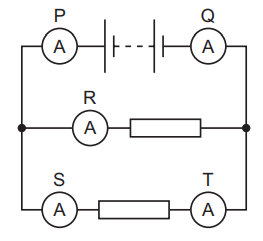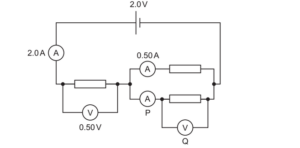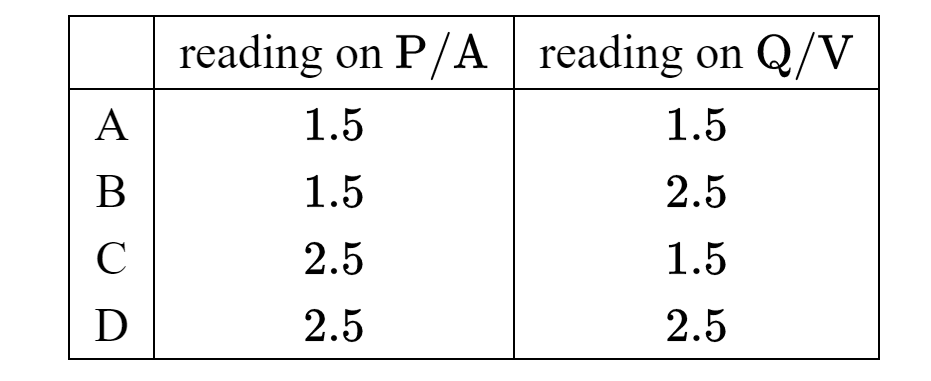Question
A circuit includes a battery, two identical resistors and five ammeters, P, Q, R, S and T.

Which statement about the readings on the ammeters is not correct?
- P has a greater reading than Q.
- P has a greater reading than R.
- P has a greater reading than S.
- P has a greater reading than T.
Answer/Explanation
Ans:
A
Question
A circuit contains a cell of electromotive force (e.m.f.) $2.0 \mathrm{~V}$, three resistors, three ammeters and two voltmeters. One ammeter is labelled $\mathrm{P}$ and one voltmeter is labelled $\mathrm{Q}$.

The readings on the other two ammeters and on the other voltmeter are shown.
What is the reading on ammeter $\mathrm{P}$ and what is the reading on voltmeter $\mathrm{Q}$ ?

Answer/Explanation
Ans:A
Question
A circuit contains a cell of electromotive force (e.m.f.) $2.0 \mathrm{~V}$, three resistors, three ammeters and two voltmeters. One ammeter is labelled $\mathrm{P}$ and one voltmeter is labelled $\mathrm{Q}$.

The readings on the other two ammeters and on the other voltmeter are shown.
What is the reading on ammeter $\mathrm{P}$ and what is the reading on voltmeter $\mathrm{Q}$ ?

Answer/Explanation
Ans:A
Question
An electrician sets up a potential divider circuit in a fridge so that when the fridge door is open and light from the room enters the fridge, a warning light turns on.
Which component does the electrician need to use in addition to a variable resistor?
- light-dependent resistor
- relay
- thermistor
- variable resistor
Answer/Explanation
Ans:
A
Question
Where must a fuse be connected in a mains electric circuit?
A the earth wire only
B the live wire only
C the neutral wire only
D the live wire and the earth wire
Answer/Explanation
Ans:B
